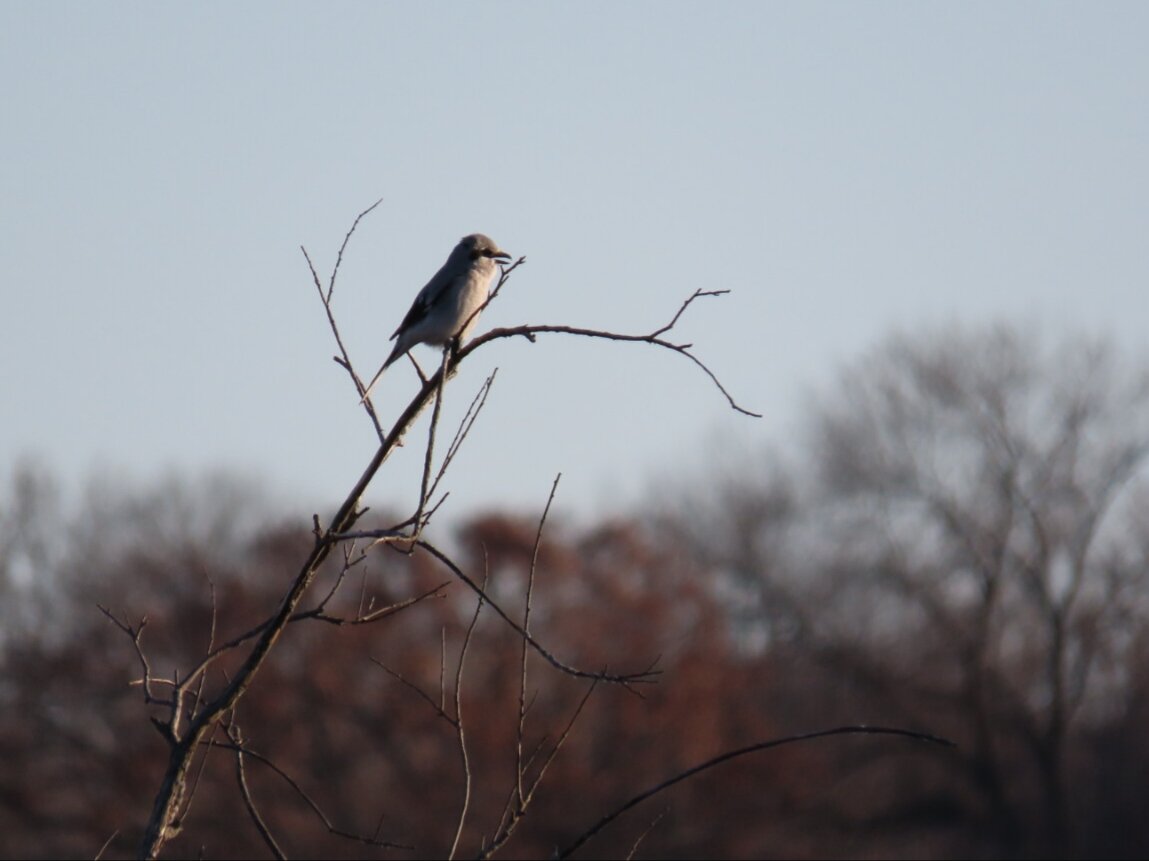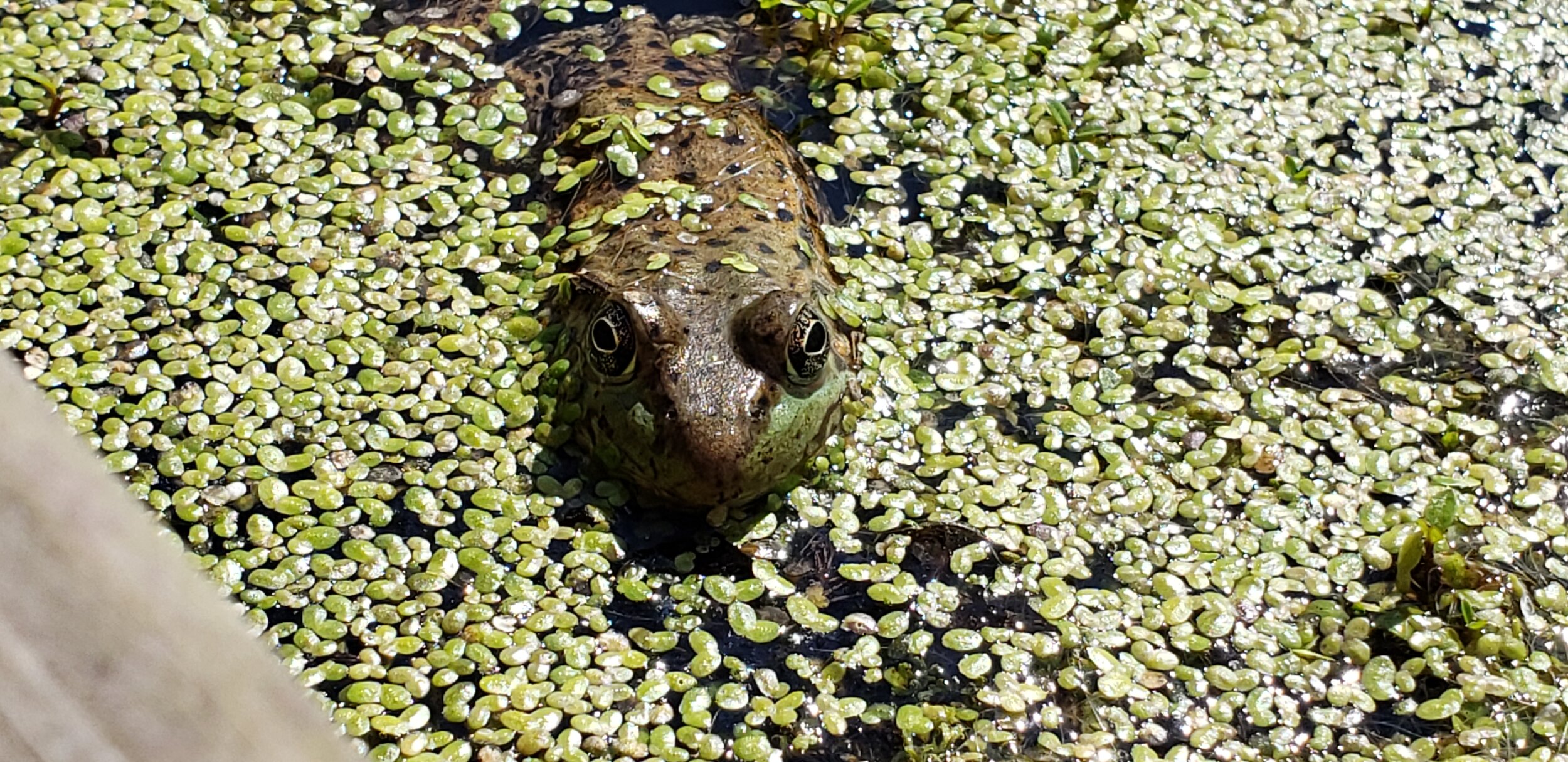Earth Day Birding
Welcome back to the Entryway to Birding blog! After some colder temps last week, things are starting to trend warmer and it’s really feeling like spring. Spring peepers have been peeping, new blooms are coming up, and exciting birds are making some pit stops in Madison as they travel through during spring migration.
A pasqueflower blooms on Westport Drumlin Prairie. Photo by Caitlyn Schuchhardt
I don’t know about you, but I’ve started to lose track of time. Several weeks have gone by since COVID-19 sparked a complete upheaval of our daily routines. It’s hard to believe all the adjustments Wisconsinites have made in such a short amount of time (which simultaneously feels like an eternity)! Our social distancing efforts are paying off, though, and it’s important that we continue to hold our course and limit our contact with others as much as we can, for the benefit of everyone.
There’s an important day coming up, though, that I don’t want us to forget about in the midst of our strange reality. A day that is perhaps feeling more important to us that ever—Earth Day is this Wednesday.
In this anxious time, getting outdoors has given many of us solace and comfort. Our green spaces have been providing a space for us to feel healthy and connected. For me, being able to safely explore our local parks and lesser-traveled hidden gems (like those board member Topf Wells has suggested here!) has brought a renewed sense of gratitude for our environment, for the organizations that work to protect those places, and for all the creatures—birds and more—that make those places so special.
Back in January, Brenna and Carolyn wrote up some resolutions for being more nature-minded in 2020. Earth Day seems like the perfect opportunity to re-visit one of those resolutions and set aside some time to appreciate the signs of spring and the ever-changing landscapes around us, to reflect on the importance of the environment and how it keeps us hopeful in hard times, and (if you’re up for it!) refine some of your birding skills.
So, in honor of Earth Day, I’m proposing a simple challenge: find your sit spot.
Turtles like sit spots too! Photo by Caitlyn Schuchhardt
What’s a Sit Spot?
Sit spots are places that you frequently go to sit, where you spend time in quiet awareness of the natural world around you. The intent is to visit them often—to take notice of the changing landscape through the seasons, to get familiar with the wildlife that may use that space, and to give yourself a mental and physical escape. Sit spots are perfecting for meditating, for wildlife viewing, for bird watching, for journaling or sketching, for simply just taking a moment to breathe.
Maybe you’re already on top of your resolutions and have been visiting your sit spot for months now! But maybe you haven’t had the chance to find one, or have felt too busy or overwhelmed with all that has been happening in the last few months. Now is a great time to revisit a spot you’ve found or find a new one where you can track the coming changes of spring, get to know the birds that frequent that spot, and carve out of a space to disconnect from the stresses of the world.
Here are a couple of suggestions for this simple Earth Day challenge, should you choose to pursue it:
Find a spot near your home or in your neighborhood. If you have a backyard, it’s perfect for this, but feel free to explore beyond your home too (safely social distancing, of course). Don’t go anywhere too crowded where you might be interrupted. Try and find somewhere a bit off the beaten path or go early in the morning when there may be fewer people around.
Keep it green. Ride your bike, walk, rollerblade—try and find a spot you can access without a car.
Silence your phone. It’s hard to disconnect sometimes, but this is an activity where it’s important to give yourself space away from screens and distractions.
Bring a journal or sketchbook. If you’ve had a lot on your mind lately, sit spots are a great place to process your thoughts. But if you’re not a journaler, try sketching some of the natural features you see around you. Putting pencil to paper forces you to look at the world in a different way—you’ll be surprised at all the details you notice!
For all you birders, this is a great activity to help you refine your bird ID skills. In last week’s post about getting started with birding, I mentioned that the best way to start is one bird at a time. Sit spots are perfect for making a closer, in-depth study of a bird. If you’re still and quiet, they may get a little closer and stay in view a little longer!
Here are some things to pay attention to while you’re birding at your sit spot that will help you improve your identification skills:
Bird behavior
Try and keep track of what the bird is doing. What trees is it frequenting? Is it catching bugs or looking for seeds? Is it on the ground more than it’s in the trees? Is it climbing the bark or flitting around constantly? Is it skulking out of sight, only popping up for quick looks?
These are great clues to help you identify what type of bird you are seeing. Eastern phoebes, for example, tend to perch on the edge of branches and flit out to catch insects. The more you watch them, the more you’ll see that they also like to pump their tails while they are perched. Picking up on bird behaviors like this will help you get to know each bird species better, and when you run across those behaviors again, you’ll be able to ID that bird right off the bat!
An eastern phoebe perches on a branch. Photo by Caitlyn Schuchhardt
Field marks
When I first got into birding, I was awful at picking out field marks. I just didn’t know what to look for and my eyes would always focus on the features that were the most unreliable for identifying birds—like color or size. Color is so dependent on the lighting and can look drastically different on the same bird depending on the time of day or where it’s sitting. And size is incredibly deceptive, especially when you’re looking through binoculars.
So what should you look for? Look at the bird’s face. It sounds so easy, but it took me a lot of practice to get in the habit of looking to the face first. I’d describe birds I was struggling to ID to folks, who would then ask me, “What did the bill look like? Was there an eye ring? What color was the throat?” and I could only tell them that the bird was brownish-grey and it was small. Oops!
Their questions helped me realize how important it is to look at the bird’s face and head first, where you’ll find a majority of field marks. Of course, if the bird is still in your view, you should also take note of the wings and the color and the size! The more info you have to ID, the better. But if you only have a few seconds, look to the face. Check out the bill. Check out the eye. You’ll narrow down your ID options a lot faster!
Songs and calls
I struggle with bird songs and calls, and I think a lot of people do. The only strategy that has been foolproof for me so far is to watch the bird as it sings. And this is where your sit spot comes in handy! Pay attention to the birds around you and watch them sing their songs.
I could listen to songs and calls on the field guide apps all day and I guarantee I won’t remember them later (and oh, I’ve tried!). But the moment I stop and study a bird singing in the moment, right in front me—that’s it! It’s in my head now (Mostly! Well, at least 75% more than it was before!). Of course, this feels like a never-ending process at times because many birds have lots of calls and lots of variations on them. The more you study them at your sit spot, though, the more you’ll be able to recognize them (even out of sight!) at your next visit.
I had no idea what a northern shrike sounded like until I heard a strange noise in the field. After spotting it, I was able to watch it make its call for awhile. The next time I heard that noise, sure enough—it was the shrike again! Photo by Caitlyn Schuchhardt
Wherever you choose to go this Earth Day, and whatever you choose to focus on during your visit to your sit spot, remember to be patient. It takes a few moments for your mind to shift, for your eyes and ears to get adjusted to the world around you. But before you know it, you’ll be noticing things that you never noticed before.
A large frog pokes out from the duckweed, a few summers back. Photo by Caitlyn Schuchhardt
My favorite time to visit my sit spot is in the spring—right around this time of year. I like to pick locations with water, like a small pond, where I’m able to hear the spring peepers peeping. Often, when I’d settle down and start watching, it’d feel like there isn’t much there. But I’d wait. And wait. And wait. And suddenly I’d spot one spring peeper, then another, then another.
There’s that moment—that little thrill—when you spot the first frog or turtle, their head poking out amongst the duckweed. Pretty soon you’re spotting them everywhere, wondering if they had just appeared or if you’d been staring at them the whole time.
I love that thrill, that spark of joy that comes in that moment of discovery. I’ve written before about that joy—it’s part of what has me so enamored with birding—and how it keeps me hopeful and excited during such stressful times.
I hope that whatever you find at your sit spot this Earth Day gives you that thrill, and reminds you of all that this wonderful world has to offer us.
I’ll be back next Monday with another post, but I’d love to hear about your sit spot and what you may have seen throughout the week! Comment below about your experiences. Have you found a great sit spot in your neighborhood? (You can keep it a secret, but we’d love to hear what it’s like!) What are you feeling grateful for as Earth Day approaches? What new signs of spring are you seeing?
See you next week!
___
Written by Caitlyn Schuchhardt
Caitlyn is the Communications and Outreach Assistant at Madison Audubon. She’s crazy for birds because they changed her life. She’ll be back next Monday with some tips and tools for birders, new and experienced! Between now and then, she’d love to hear about the birds you’re seeing and hearing. Leave a comment below or email to drop her a line!









